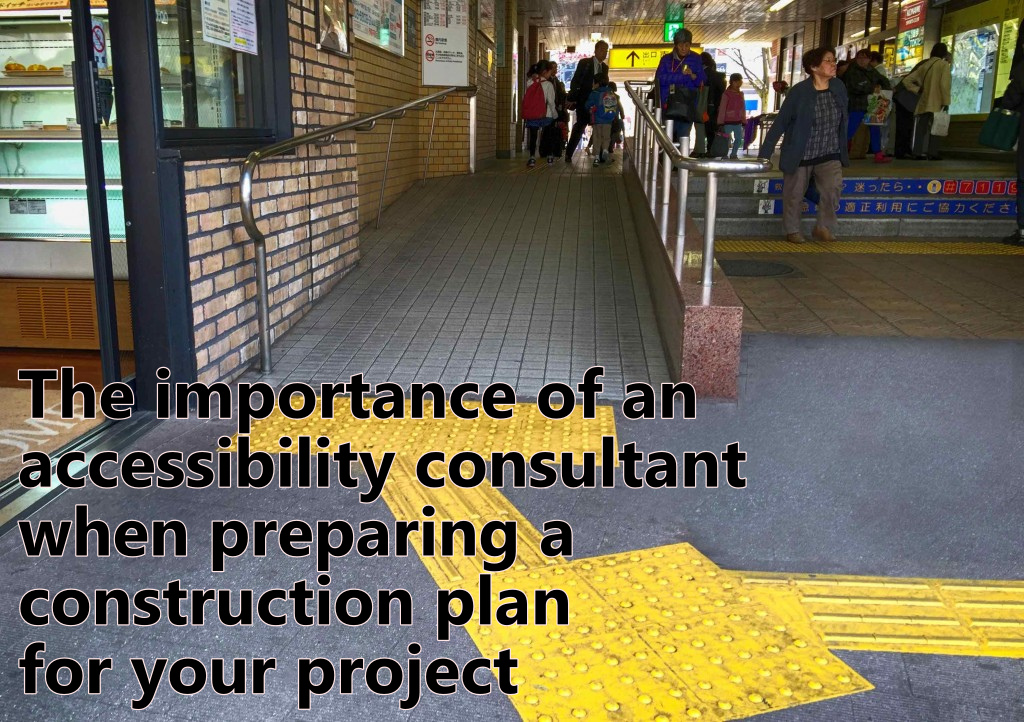
This post is written by Ruchira Sarin.
Accessibility / Universal Design Specialist has been recognised as a professional in the construction business/ project development team in the National Building Code of 2016.
I got trained as an Architect 17 years back. As a young graduate from a premier architectural school, I felt I would conquer the world with my 5 years of rigorous training. To top it all, as a freshly born, Howard Roark from Fountainhead, I felt I will be unique and so would be my spaces. From split levels to fancy stairs, to complex planning, everything required to make the experience as awe-inspiring, would reflect in my designs. And not just me, most of the Masters in architecture thought alike. We ended up creating problems! Simple barriers that we built, blocked some users from enjoying the beautiful buildings.
Dated back in 2007, my eyes opened to this reality, sitting with few friends who have disabilities. They shared how their needs are left out of the design briefs and project planning. And from then started my professional journey of self discovery. I got trained in accessibility standards by experts from abroad as our very own set of standards were outdated. No one even cared to look at them, for they were hidden in an annexure in a mammoth sized NBC 2005, titled in a style that would make a designer care for them should they be designing ‘special’ buildings meant for persons with disabilities.

Talking about the state of affairs in Architecture – Architects through their design unconsciously leave out 15% of the country’s population (read population with disabilities). They may themselves not be able to enter/access when are they old/ acquire a disability. Here i would like to mention – accessibility is not just for people with disabilities. It makes a building safe for all. Have you ever encountered a user of your building who complained facing difficulty walking on a beautifully developed cobbled surface courtyard or someone banging at a glass door without realising? Accessibility addresses such issues at all levels by compliance to standards.
In the early part of year 2017 – a new dawn in the disability sector was brought forth by a newly framed law (RPWD Act 2016) and the revised edition of NBC 2016 with a clear-cut focus on accessibility in all its parts. When a new project is kicked off, a design team involves a team of several specialists apart from architects – lift consultants, plumbing consultants, acoustics consultants, fire consultants, project management consultants, sustainability consultants – 20 such consultants, as listed in NBC. One key point in the new NBC is to have an Accessibility/Universal design Consultant onboard any project among the list of 20 other specialists. And rightfully so, for accessibility cuts across all aspects of a built environment right from the planning, structure development, finishing elements like doors, furnishing, accessories, signage, pathways, emergency aspects and so on. I would like to clarify, that accessibility is not just about ramps or railings or meant just for wheelchair users. There is a range of disabilities – 21 types as recognized in the law. Within each type also lies a range. For instance not every person with vision impairment may be totally blind. Some might be able to see large font, some might be partially sighted or with low vision etc.
We see many new constructions not following the guidelines in spite of the stringent law (RPWD Act). Many times intentions are right but due to lack of technical know-how there are many flaws in implementing the accessibility features. There are finer details that get missed out. There may be a ramp but it may not have all accessibility features that are required. Another important reason to collaborate with people with disabilities and experts.
Accessibility consultants should be involved right from the preparation of a project brief. Their expertise is crucial in the project planning stage, during construction, post completion and during building maintenance. Design appraisals and access audits are crucial to maintaining the accessibility health of any project.
Key points to remember are –
- Projects are a teamwork and architects are jacks of all trades seeking support of experts to make a successful project. Just like we cannot recommend the amount of steel that goes in a beam, we may not be equipped with the right knowledge of accessibility standards to create a fully accessible ramp.
- Accessibility is an evolving subject. There are new technologies being developed for navigation. There are many disabilities like people with Autism, intellectual disabilities whose needs are still not adequately addressed in the standards. It requires continuous study and research. An accessibility expert brings in that value to any project that’s being built.
- Now it is not a choice of Architects or Clients to make their place accessible or not. If it is public building (used by public, like workplaces, shopping arenas or even group housing) it should be made accessible as per the legislative mandate. There are penalties for non compliance with standards.
My call to fellow architects – engage with an accessibility expert right now, (if you do not have one empanelled in your teams) and see how a stitch in time saves nine!
Cartoon by Ashish Sharma
